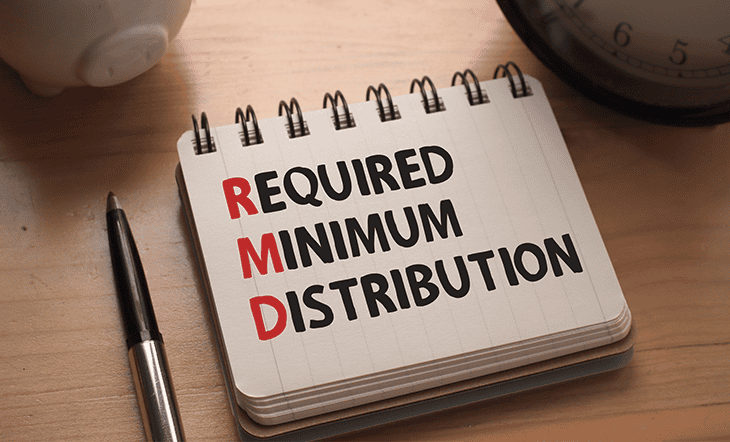Investing your money is one of the most critical components of financial planning. Investing is significant for wealth creation. It can help you achieve varied financial goals and plan for bigger purchases that may seem impossible to accomplish straight away. Investing essentially means buying at a low price and selling at a higher price to book a profit. However, there are several intricate layers, depending on your chosen investment products. Some investments offer regular dividends, others interest on maturity. Moreover, you may invest regularly or erratically. You may also withdraw funds in between. All of these aspects can impact your overall returns.
Before you select any, you need to understand the return potential of the investment. Knowing how to calculate a product’s return rate or growth potential helps you monitor your success, plan your goals, and eliminate financial anxiety. If you need help with how to measure the compound rate of growth of an investment portfolio, do reach out to a professional financial advisor who can guide you on the same.
There are several ways to measure the return rate of investment. One of them is known as the compound annual growth rate. Keep reading to learn more about it, what it denotes, and how to calculate it.
What is the compound annual growth rate?
The compound annual growth rate is the rate at which an investment grows. It could be explained as the rate of return required for an investment to grow from the beginning to the ending balance if all profits were invested back into the market. In order to calculate the compound growth rate of investment, you need to know the starting value of the investment, the ending value of the investment, and the number of years the investment was held.
It can be calculated by using the following formula:
Compound annual growth rate = (Ending value / Starting value) ^ (1 / Number of years) – 1
For example, if you invested $100 at the beginning of a five-year period and it grew to $150 at the end of that period, the compound annual growth rate would be:
Compound annual growth rate = ($150 / $100) ^ (1 / 5) – 1 = 0.105, or about 10.5%
Alternatively, you can also use a compound rate of growth calculator.
The compound annual growth rate is a useful measure of an investment’s performance because it considers the effects of compound interest, which can make a significant difference over longer periods. However, it is essential to note that the compound annual growth rate is not an accurate metric that gives you the actual return rate of your investment. The compound annual growth rate does not take into account the volatility of an investment or the changes in its value over time. It only gives the average rate of return over the specified period. Therefore, it is only an estimation of the return rate that an investment can have if it grows at the same rate every year and all profits earned during the year are reinvested at the end of the year. If there are any deviations from these assumptions, the above formula will lose its credibility.
Uses of the compound rate of growth in portfolio selection
It is important to note that even though the compound annual growth rate is not 100% accurate, it does offer investors a chance to compare different investments and pick the most suitable option. The metric is most commonly used to compare year-on-year returns from two different assets, allowing investors to make a better decision.
Moreover, the compound annual growth rate can be used for different asset classes. For instance, you can use it to compare stocks with high-yield bonds. It can also be used to compare products from the same asset class. For example, you can compare two stocks. Moreover, the compound growth rate may not factor in volatility, but it does offer a comprehensive view of varying returns over the years from the starting point to the end. For example, consider a scenario where a stock increases by 8% in the first year. In the second year, the stock sees a growth of 6%, and by the third year, it sees a low of -3%. The compound growth rate will offer you the average of all of this volatility from the first year to the third, even when the investment has grown disproportionately.
However, this can also be a disadvantage as the formula does not take into account how volatile an investment can be. In simple words, it gives you the end result without paying much emphasis on the journey. So, it does not help you understand how risky a certain investment can be. Some bonds and fixed-income accounts, like certificates of deposits (CDs) and savings accounts, may have a lower compound growth rate than stocks. However, while stocks may offer a higher return, they may also be riskier. If you are new to investing and trying to make a decision, you may choose stocks, given their high compound monthly growth rate. However, if you have a low-risk appetite, you may find navigating through the extreme volatility extremely stressful.
SPONSORED WISERADVISORChoosing the right financial advisor is daunting, especially when there are thousands of financial advisors near you. We make it easy by matching you to vetted advisors that meet your unique needs. Matched advisors are all registered with FINRA/SEC. Click to compare vetted advisors now.
What is the time-weighted rate of return?
The time-weighted rate of return, also known as the geometric mean or geometric average, is a way to calculate the compound growth rate of an investment. The metric takes into consideration inflows and outflows of money throughout the investment period to offer an accurate result. The investment term is rarely ever uniform in terms of money invested and withdrawn. You are bound to withdraw cash in between the investment term for your use. You may even invest more as and when you have money. The time-weighted rate of return breaks the return into intervals depending on your contributions and withdrawals from the investment.
To calculate the time-weighted rate of return, you need to know the starting and ending values of the portfolio, as well as any contributions or withdrawals made during the period. The time-weighted rate of return is then calculated by dividing the portfolio’s ending value by its starting value, adjusted for any contributions or withdrawals made during the period.
Here is the formula for calculating the time-weighted rate of return:
Time-weighted rate of return = [(1+HP1) x (1+HP2) x…x (1+HPn)] – 1
Here:
- n is the number of sub-periods
- HP = (End Value – (Beginning Value + Cash Flow)) / (Beginning Value + Cash Flow)
- HPn = Return for the sub-period n
For example, consider an example where you invested $100,000 in January. At the end of January, your portfolio’s value will increase to $100,850. You can calculate HP1 by using the formula:
HP1 = (100,850 – 100,000) / 100,000 = 0.8%
In February, you make an additional contribution of $1,000, and your investment portfolio rises to $102,870. You can calculate HP2 by using the following formula:
HP2 = [102,870 – (100,850 + 1,000)] / (100,850 + 1,000) = 1%
In March, you contribute another $1,000, and your portfolio increases to $109,100 by the end of the month. You can calculate HP3 by using the following formula:
HP3 = [103,390 – (102,870 + 1,000)] / (102,870 + 1,000) = -0.4%
After factoring in all of these sub-periods in your investment horizon, you can now calculate the time-weighted rate of return as shown below:
Time-weighted rate of return = [(1+.008) x (1+0.01) x (1+ -.004)] – 1 = 1.4%
So, your return from the three months of investment is 1.4%.
You can also use the following formula:
Time-weighted rate of return = [(Ending value + Contributions – Withdrawals) / (Starting value + Contributions – Withdrawals)] – 1
For example, if you started with a portfolio valued at $100,000, made a contribution of $10,000 halfway through the year, and withdrew $5,000 at the end of the year, and the portfolio ended the year valued at $115,000, the time-weighted rate of return would be:
Time-weighted rate of return = [($115,000 + $10,000 – $5,000) / ($100,000 + $10,000 – $5,000)] – 1 = 0.15, or about 15%
It’s important to note that the time-weighted rate of return is helpful in evaluating the performance of a portfolio over time, but it may not be the best measure for comparing the performance of different portfolios or investment strategies.
Uses of the time-weighted rate of return
The primary purpose of using the time-weighted rate of return formula is to include the cash inflows and outflows as stated above. Understanding the true value of your profits can be challenging when you have made multiple withdrawals and contributions from the beginning to the end of the term. The time-weighted rate of return offers a balanced picture that helps you understand the money you have earned even with these additions and subtractions. As a result, the calculation is a lot more accurate.
However, an important thing to keep in mind is that just like when using the compound annual growth rate formula, it is assumed that all profits are reinvested in the portfolio at the end of each year. Moreover, for the formula to work, all sub-periods should be the same.
Another thing to know about the time-weighted rate of return formula is that even though it offers accuracy, it is still challenging to use. Keeping track of all cash flow statements can be puzzling. This is especially true in the case of long periods and multiple transactions. In this case, it may be better to use a calculator or consult a professional to ensure accuracy.
Time-weighted rate of return or rate of return
Time-weighted rate of return and rate of return are both measures of the performance of an investment or portfolio, but they differ in how they account for changes in the portfolio’s value over time.
As mentioned above, the time-weighted rate of return is a measure of a portfolio’s performance that considers the effects of contributions and withdrawals on the portfolio’s value. It reflects the portfolio’s performance regardless of the timing or size of contributions or withdrawals. On the other hand, the rate of return is a measure of the change in the value of an investment or portfolio over a specified period of time. It is calculated by dividing the investment’s ending value by its starting value and expressing the result as a percentage. The rate of return is a useful measure of an investment’s performance, but it does not take into account the effects of contributions or withdrawals on the portfolio’s value. As a result, it may not be the best measure for evaluating the performance of an investment portfolio over time, especially if there have been significant contributions or withdrawals during the period.
Here is the formula to calculate the rate of return:
Rate of return = (Net profit or loss / initial investment) x 100
For example, if you invest $1,000 in a mutual fund and the value increases to $1,500 in a few years, the rate of return would be
Rate of return = $500 / $1000 x 100 = 50%
It is important to note that the rate of return is a simplified calculation of where you stand in terms of profits or losses. It does not give you details of your cash flow or volatility. It is only the final value of your investments and the profits or losses you have made.
To conclude
Understanding your investment returns can be confusing. However, it is crucial to know and understand the different formulas that can help you calculate your gains or losses. This can help you plan your goals, calculate returns with regard to inflation, and pick the right investment products.
The time-weighted rate of return is generally considered to be a more accurate measure of portfolio performance, while the rate of return is more helpful in evaluating the performance of individual investments. You can calculate them both and get a better understanding of your returns. You can also use online calculators if you find the calculations confusing. Further, it may also be advised to contact a professional financial advisor in your area to know how to use these formulas and avoid errors.
Use the free advisor match tool and get matched with 1-3 qualified financial advisors who can guide you on how to calculate the growth potential of an investment portfolio. All you need to do is answer a few simple questions about yourself and the match tool will help connect you with advisors suited to meet your needs.
For more investing tips and strategies, visit Dash Investments or email me directly at dash@dashinvestments.com.
About Dash Investments
Dash Investments is privately owned by Jonathan Dash and is an independent investment advisory firm, managing private client accounts for individuals and families across America. As a Registered Investment Advisor (RIA) firm with the SEC, they are fiduciaries who put clients’ interests ahead of everything else.
Dash Investments offers a full range of investment advisory and financial services, which are tailored to each client’s unique needs providing institutional-caliber money management services that are based upon a solid, proven research approach. Additionally, each client receives comprehensive financial planning to ensure they are moving toward their financial goals.
CEO & Chief Investment Officer Jonathan Dash has been covered in major business publications such as Barron’s, The Wall Street Journal, and The New York Times as a leader in the investment industry with a track record of creating value for his firm’s clients.
Other posts from Jonathan Dash
Things You Should Know About RMDs if You Are Turning 73
Retirement accounts like the 401(k) and the Individual Retirement Account (IRA) are broadly classified as traditional, and Roth based on their taxability....
Should You Keep Your Money with Your Employer’s 401(k) Plan After You Retire?
One critical financial decision looms large as you approach retirement - how does a 401(k) work when you retire?...
6 Reasons Your Retirement Plan Might Change and How to Prepare For it
Planning for retirement is an essential part of securing a financially stable future. It can help you live...




